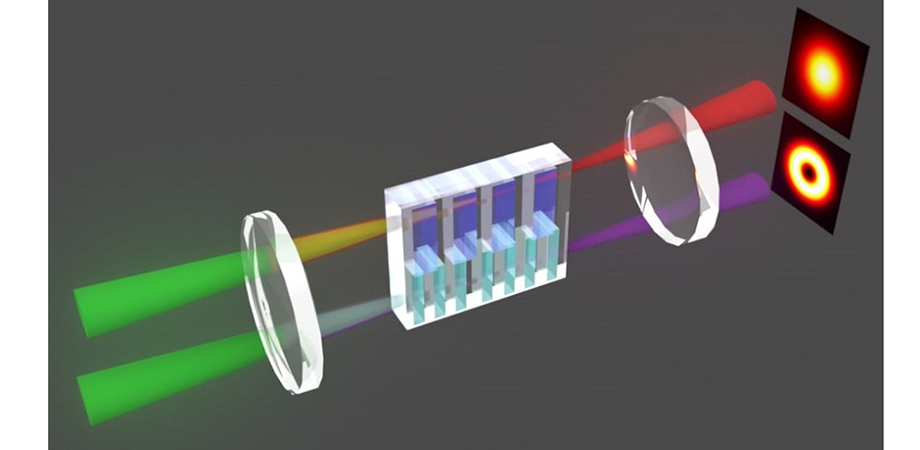Aug 31 2020
Optical vortices are defined by a helical phase front and doughnut-shaped intensity distribution. They contribute to a variety of applications, right from optical communications to microscopy.
 Schematic illustration of the dual-channel, dual-beam-mode OPO experimental setup. Image Credit: SPIE.
Schematic illustration of the dual-channel, dual-beam-mode OPO experimental setup. Image Credit: SPIE.
And today, applications for optical vortices are steadily increasing. So, what is the most optimal method to produce optical vortices? It is believed that one of the best methods is the active, direct emission from a laser.
For applications in super-resolution imaging and quantum optics, a laser source that can produce vortices across a broad spectral range is very crucial.
Optical parametric oscillators, or OPOs, are capable of producing broadband tunable radiation from UV to infrared. OPOs that are pumped from femtosecond fiber lasers offer tunable ultrafast pulses that have tremendous performance—broad wavelength coverage, high output power, and high repetition rate. As it turns out, wavelength-tunable optical vortices can also be generated optimally through femtosecond OPOs.
Dual-Beam-Mode OPO, Two Channels
Minglie Hu from the Ultrafast Laser Laboratory at Tianjin University observed that although a single-channel vortex beam generator can provide data transmission capacity as well as trapping potential to achieve tunable terahertz radiation, the same ability is also available in dual-channel generators, in addition to the benefit of producing two different kinds of beams for a wider range of applications.
Two mutually incoherent sources with one Gaussian beam and one vortex beam could break the Rayleigh diffraction limit, which can be applied for super-resolution imaging, so a two-channel vortex beam generator is most desirable.
Minglie Hu, Ultrafast Laser Laboratory, Tianjin University
Along with his research group, Hu recently designed a two-channel, dual-pumped OPO configuration that can offer dual-wavelength and dual-beam modes that can be tuned over the telecommunications band. The study findings were reported in the Advanced Photonics journal.
The team stimulated two neighboring periods of a periodically poled lithium niobate crystal in a ytterbium-doped fiber laser arrangement and successfully achieved dual-wavelength operation. The structure makes sure that two separately tunable pairs of signals would not only synchronize with the pump but would also oscillate at the same time.
The configuration of the OPO cavity can be split into a pair of channels—one for generating a range of vortex beams and the other for producing Gaussian beams.
Vortex beams with different orders are created by replacing the q-plate.
Minglie Hu, Ultrafast Laser Laboratory, Tianjin University
Hu also observed that the q-plate is adequately thin so that any dispersion that is introduced is insignificant. The OPO, thus obtained, produces two signals that can be tuned over 1520 to 1613 nm and 1490 to 1549 nm, in that order.
Hu and his research team hope that the suggested technique with its easy, low-cost cavity design will provide an easy way to produce optical vortices in dual-beam mode. They predict that it may offer a platform for multidimensional quantum entanglement, nonlinear optics, super-resolution imaging, etc.
Journal Reference:
Fan, J., et al. (2020) Two-channel, dual-beam-mode, wavelength-tunable femtosecond optical parametric oscillator. Advanced Photonics. doi.org/10.1117/1.AP.2.4.045001.